A CONVERSATION WITH AARON SEETO
The inauguration of Museum MACAN in 2017 significantly transformed the art landscape in Indonesia. In this interview, ART SG's Contributing Editor Tan Siuli catches up with the Director of Museum MACAN, Aaron Seeto, as he shares his thoughts about the values and principles he brings to his role and what makes it rewarding, as well as some ideas on how museums can navigate the post-pandemic world.

Aaron Seeto, Director of Museum MACAN Jakarta
Image courtesy of Museum MACAN
By Tan Siuli
TSL: “Hello Aaron, you were previously Curatorial Manager of Asian and Pacific Art at QAGOMA in Brisbane, and prior to that, Director of Sydney’s 4A Centre for Contemporary Asian Art. What made you decide to move from Australia to Jakarta to take up the position at Museum MACAN?”
AS: “The context of Indonesia is fascinating – I had been in and out of Indonesia for a long time, but I’d never really spent continuous periods of time here. So the position aligned with the curatorial research interests that I have, but also more importantly, MACAN represented a type of institution I could really relate to. We’re a private museum, but we focus on art education and there’s a civic function within the space, and that’s what really resonated with me.
Personally, the opportunity to spend a long time in one particular place has helped to enrich my understanding not just of Indonesia but also how the region and the world works, and I think this has been a positive thing for my family as well, being able to experience other cultures, learning other languages….being immersed in other cultures I think, is important for young people, and I’m happy that the family have embraced it as much as I have.”
TSL: “Except for the traffic maybe…”
AS: “Jakarta’s traffic illustrates how big and how complicated the city is. With a population of 20 million plus people, you are exposed to a social and cultural reality that you don’t get when you’re living in Brisbane or Sydney, or even in Singapore.
And I think that was what was interesting about the job also, Museum MACAN engages with new publics in a developing country. The ability to make a significant and positive impact is extremely rewarding.
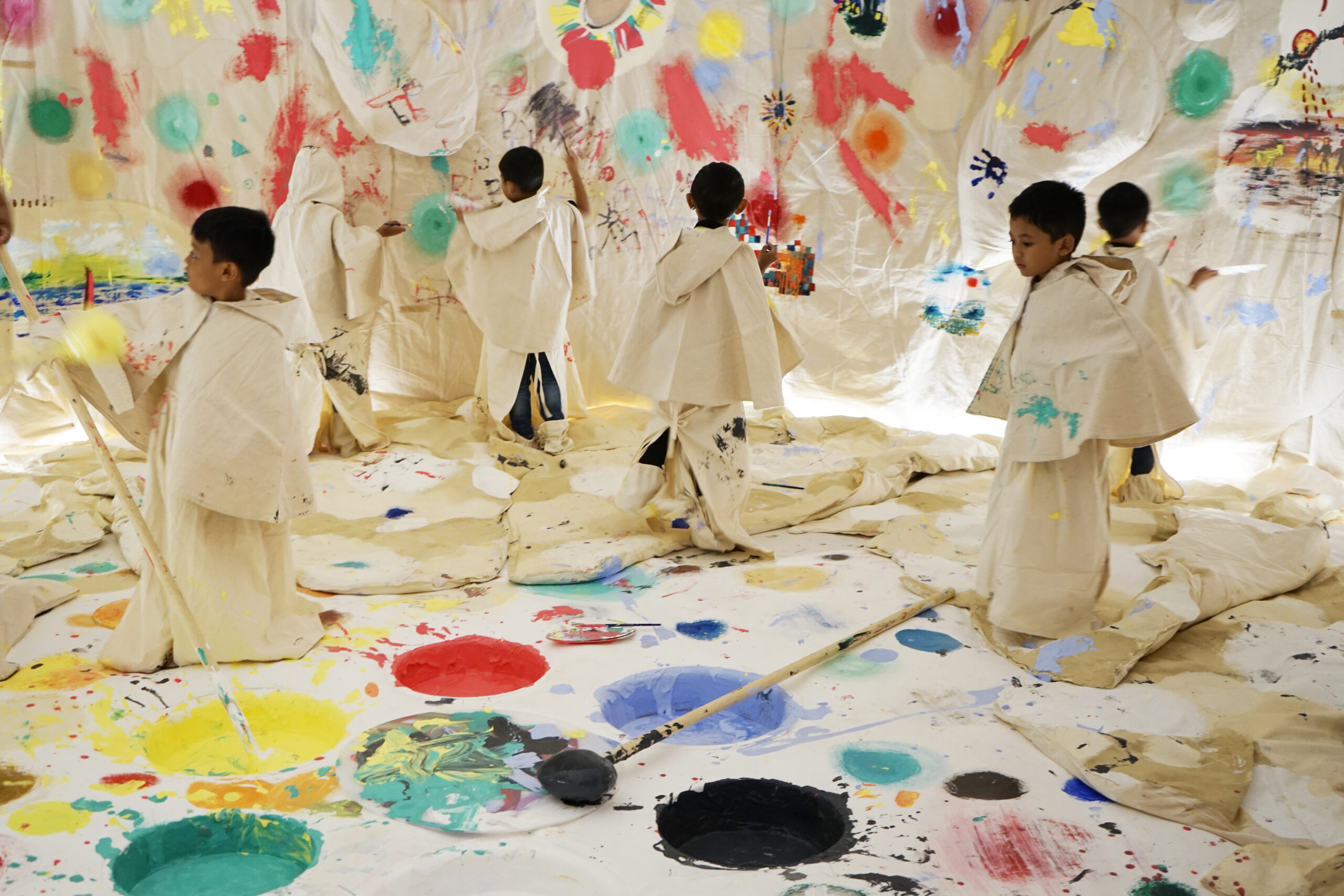
The Children’s Art Space at Museum MACAN.
Image courtesy of Museum MACAN
TSL: “How similar or different is the art ecosystem in Indonesia or Southeast Asia from that in Australia? What are its strengths, gaps or unique traits?”
AS: “Compared to Australia or other places in Southeast Asia, it is pretty unique. Firstly if you look at the institutional framework, there is not well established support for artists or the arts from the government – it is one of the most pronounced differences. I would also say that philanthropic support by patrons to support the arts is also very much only at a latent stage. What this results in is a very strong independent scene. The Pandemic has had a devastating impact on artist communities around the world, and it is having a huge impact on artist communities here, especially because of underdeveloped government and institutional support, and a lack of philanthropy and charity geared towards art and culture.
Indonesia also has a really fascinating art history; the connection of art history to Indonesia’s political history strongly defines how the ecosystem operates. I perceive that at different times, artists and artist organisations have held fundamentally important and urgent roles in society and politics. The relationship between art, society and politics results in a very strong sense of community. How artists understand their work in these larger histories is fascinating, and it makes researching in Indonesia extremely rewarding.
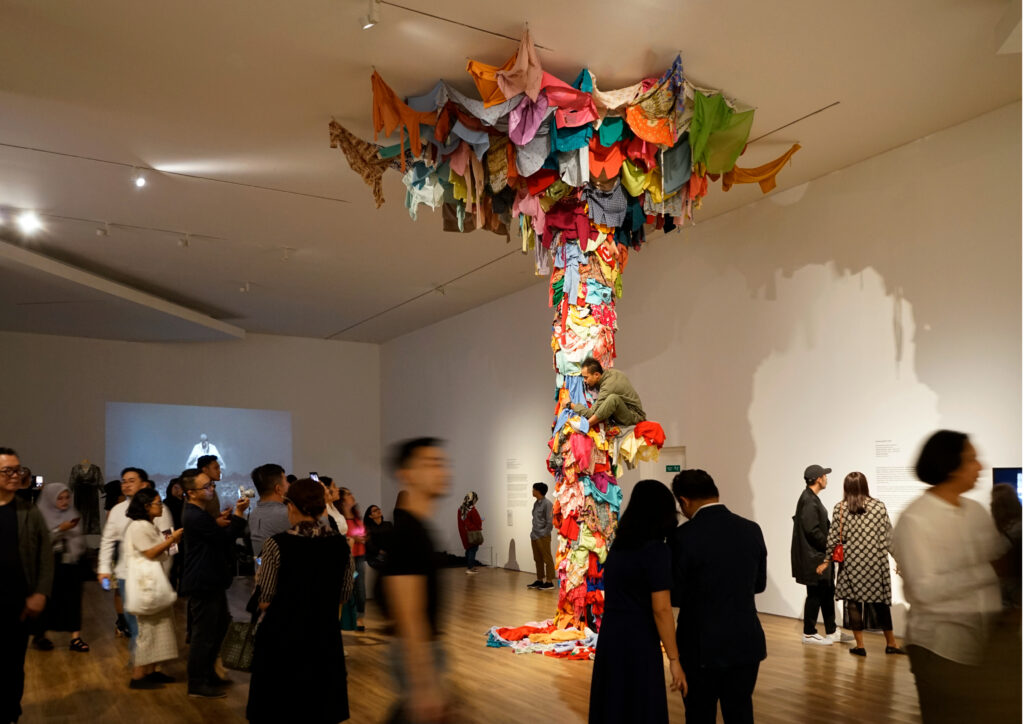
Exhibition view of Melati Suryodarmo: Why Let the Chicken Run? at Museum MACAN (2020), with Kleidungsaffe (2006), 3 hour performance, performed on 27 February 2020.
Image courtesy of Museum MACAN
Another significant observation of the Indonesian ecosystem, is the role of the art market. From my perspective I see the Indonesian art world as being split in two: Indonesia is a very important subset of Southeast Asian contemporary art, which has been buoyed by strong interest from collectors from Indonesia and from further afield – this has created a healthy awareness of artists through the market. On the other hand – there is also a very strong independent scene which is based on the activities of independent curators, artist communities and collectives, they have driven overseas institutional awareness, especially since the mid-1990s through the Singapore Art Museum, Queensland Art Gallery & Gallery Of Modern Art, the Asia Pacific Triennial, etc.”
TSL: “On that note, what do you think of ruangrupa curating documenta 15?”
AS: “There is such a great sense of pride in ruangrupa for being appointed to this very special role. It is recognition of the work being done by artists, curators and independent organisations like ruangrupa, here in Jakarta and across Indonesia. I think that the recognition of ruangrupa and their unique perspective and organization is indeed influential. And I think at this time pandemic moment, it is really refreshing to be reminded of our connections to each other, our connections to community, processes of sharing, processes, which I think are really at the core of their practice.”

Justin Shoulder, “Carrion : Episode 1” (2016) Performed on 9 September 2017 as part of Museum MACAN’s First Sight.
Image courtesy of Museum MACAN © Justin Shoulder
TSL: “Since its inauguration, Museum MACAN has done so much in terms of its programming and outreach. What are some of the initiatives that you are particularly proud of, and why?”
AS: “I think the first one is that we actually built a physical museum that gives the Indonesian scene an opportunity to programme and connect on a completely different scale. In a short period of time, we have made a significant and positive impact on the cultural life of the city and the country – We have built a physical space and developed a programming structure, that aspires to international standards of museum operation, but through a commitment to arts education, will continue to make a positive cultural impact.
I’m also really proud of how our activities connect to people. In my practice, I’m committed to this idea of connecting the outside with the inside, and this can be seen in the exhibitions we have done, and how we have developed our education programme. There is always a mix between Indonesian artists, and artists from further afield; and articulating histories of art for local audiences. When we plan our programmes, we do so from the viewpoint of being located in Jakarta, but interested in participating in a discussion of art whose influence reverberates across larger global geographies, through Southeast Asia to the world.
Museum MACAN’s facilities, and programme also provides opportunities for artists in Indonesia to be recognized and to develop exhibitions at a scale that was not previously possible and to new museum publics – we developed a major exhibition for Arahmaiani in 2018, and currently have a survey of Melati Suryodarmo; both of these exhibitions are the first major surveys of these important global artists.”
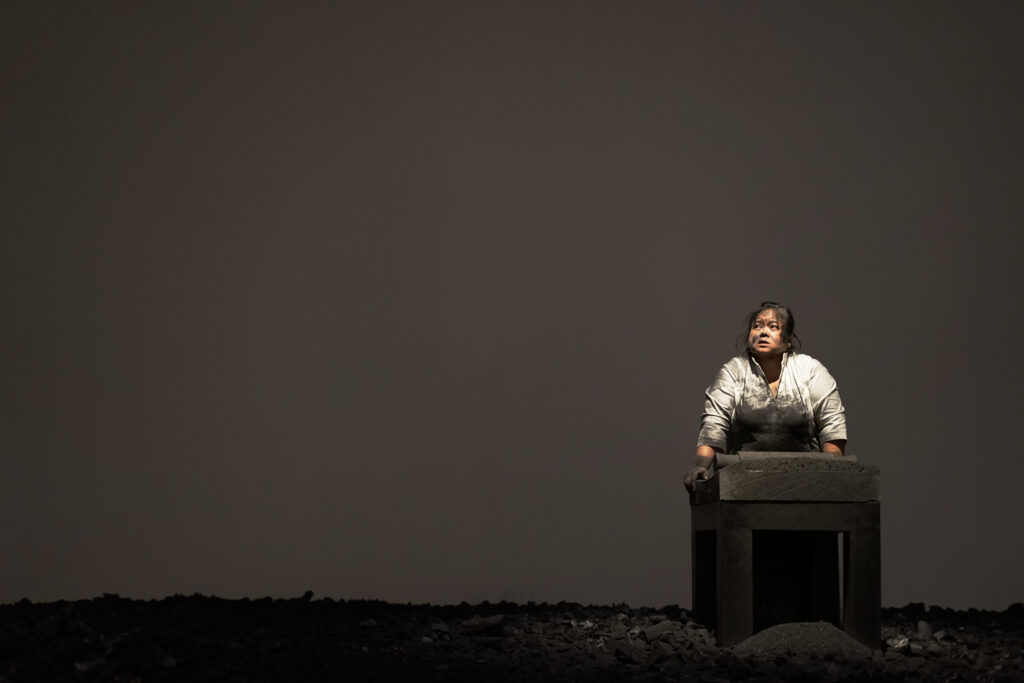
Melati Suryodarmo, “I’m A Ghost in My Own House” (2012)
12 hour performance. Performed at Melati Suryodarmo: Why Let the Chicken Run? exhibition, Museum MACAN, 29 February 2020.
Image courtesy of Museum MACAN
TSL: “During the recent ART SG x UBS discussion, where a number of key players in Southeast Asia’s art scene looked at the impact of the pandemic on the art world, you mentioned that MACAN would be shifting from ‘exhibitions’ to ‘conversations’, with the focus now being more on exchanges within Indonesia. Previously the exhibition programming at MACAN was notable for bringing in significant presentations featuring internationally renowned artists like Yayoi Kusama, Lee Mingwei, Xu Bing etc. Could you share with us some of the thinking around this shift, and how you feel it might be productive for Museum MACAN, as well as the broader art ecology.”
AS: “Exhibitions like those we did for Xu Bing and Lee Mingwei do require major resourcing but they were programmed with our local audiences, and the local conditions in mind, and I am really fascinated by how much of an impact that these exhibitions have not just on our audiences, but also on the organization. For instance – Lee Mingwei’s Seven Stories, was a really massive endeavor, which allowed us to work with local dancers and singers in a very concentrated way, the process of exchange, and generosity between artist, performer and organization, makes it extremely unique. In presenting this project, I really wanted to encourage our audiences to engage with art in a completely different way than perhaps they were used to, and in this process, both the museum and the audience can learn about what is possible in a museum, and the role that beauty and contemplation have in our everyday.
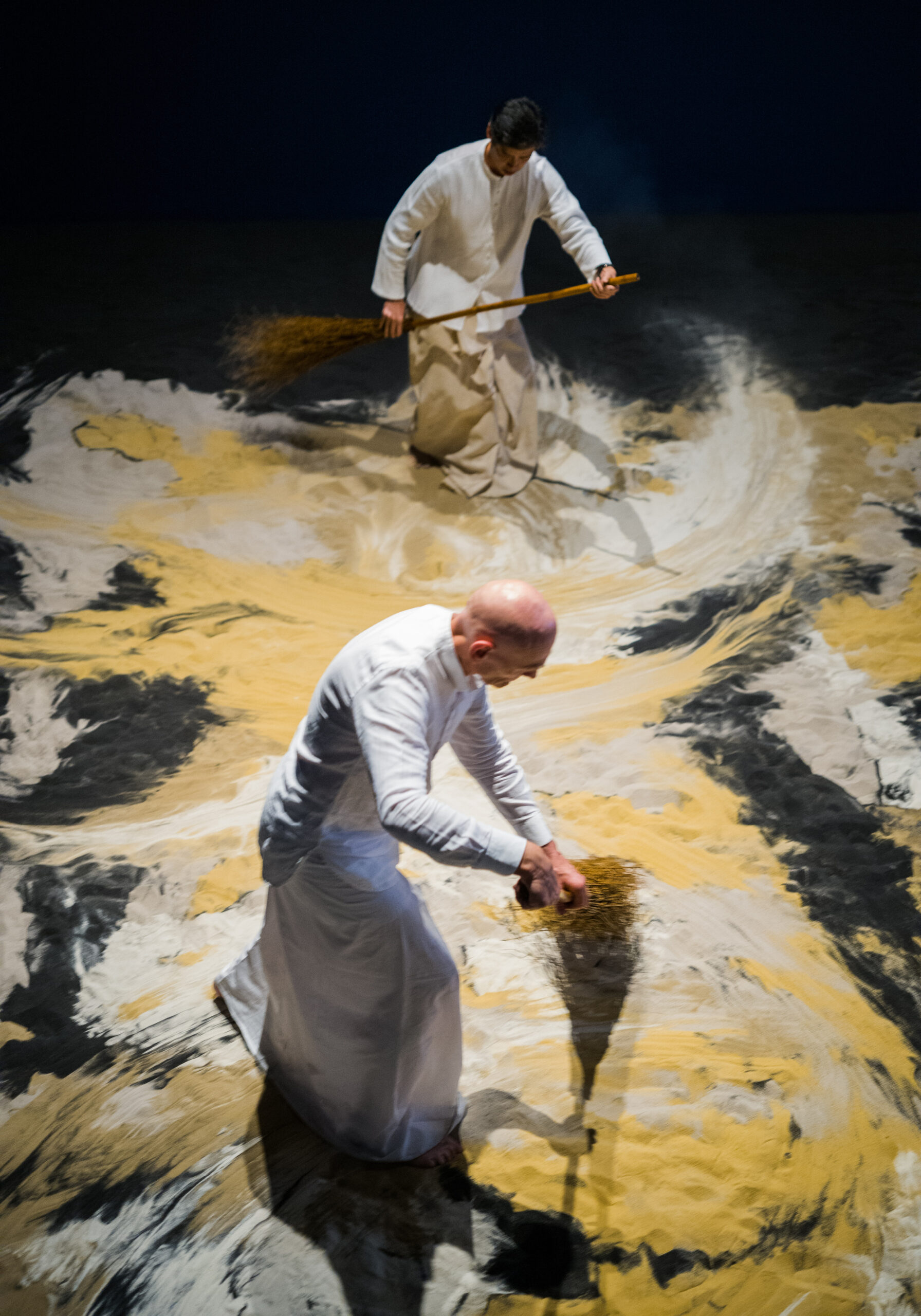
Lee Mingwei, “Guernica In Sand” (2006/2018)
Performed on 19 January 2019 as part of ‘Lee Mingwei: Seven Stories’ exhibition at Museum MACAN
(17 November 2018 – 10 March 2019)
Image courtesy of Museum MACAN
Collection of JUT Foundation for Arts and Architecture, Taiwan © Lee Mingwei
I hope that all our exhibitions privilege the generation of conversation. But, the Pandemic has made us consider the resourcing required to make exhibitions. At the moment, because of the difficulty of travel and freight, we have refocused some of our curatorial research. We are about to unveil a project called Present Continuous, which has been developed with five contemporary art organisations, five curators and five artists from across a wider geography of Indonesia in Aceh, Papua, Makassa, Majalengka, Bandung and Jogja. Coming together at this time of disruption, has been based on generous conversations with all of the collaborators, where we have each recognized how important collaboration is, and a desire to learn from the present situations that we all find ourselves.
The conversation which we are engaged with, is more generally circulating around experiences of diversity in Indonesia. Being located in the capital, we wanted to develop a structure, that not only supported other organisations who are working on the ground, but to also set up internal discussions about the quality and nature of diversity in Indonesia.
I think it’s a project that’s come out of the challenges of this last year, realizing that we’re so restricted in what we can do, so how can we imagine our research differently, for now?”
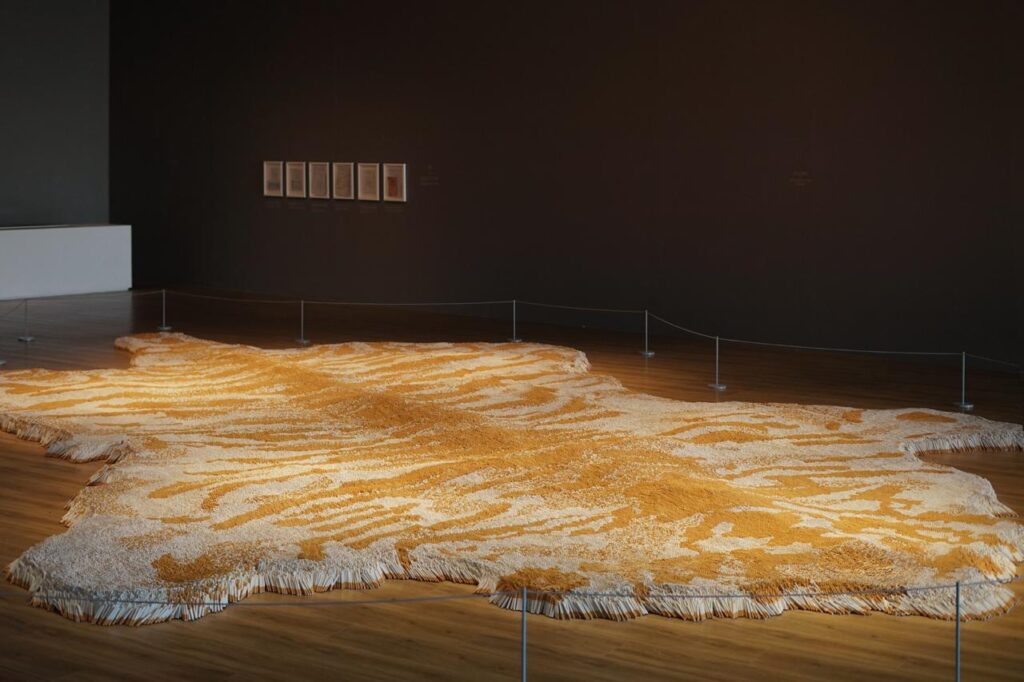
Xu Bing, “Honor and Splendor” (2004). Installation view at Xu Bing: Thought and Method exhibition,
Museum MACAN (31 August 2019 – 12 January 2020.)
Image courtesy of Museum MACAN
TSL: “Everyone’s been rethinking their place in the world, museums and institutions alike. What role(s) do you think museums can play in today’s world?”
AS: “I think at one level, it’s the same role they’ve always played. Museums are public spaces, they need to be a space where we can meet, and engage with art, ideas and with people. I think over the last year, the pandemic has forced us to consider what form public engagement will take, and so we have been experimenting with all kinds of ways to deliver these opportunities to engage with art.
I would also say that for Museum MACAN who is very young (we opened in November 2017), lots of our thinking about the museum and our publics was already very much responding to current day experiences of the city and technology. Indonesia is an incredibly young country, the majority of our audiences are under 40 years of age, and our audiences love to engage with their friends and communities via social media – so, even before the pandemic, we had already had discussions about the role of communications, and wondered whether for a city like Jakarta, which is difficult to sometimes physically navigate (you have already raised the question about the traffic!), perhaps for Millennial and Generation Z audiences, our public already expected hybrid experiences.”

Aaron Seeto, Director of Museum MACAN Jakarta
Image courtesy of Museum MACAN
TSL: “What do you think is exciting about the art scene(s) in Indonesia, and the wider Southeast Asian region, right now?”
AS: ” The curatorium that underpins our Present Continuous project has opened up really fascinating and exciting strands of conversation, this is not only exciting, but also really nourishing. As a curator, I am learning about different perspectives and practices, and as an organization, we are stretching the ways in which to work. We’re learning about artists and local cultural issues that we probably wouldn’t have come across in the same way, and through this project we’re able to elevate the conversation to a much bigger stage.
I’m finding some really fascinating conversations that are happening and we’re really only at the beginning of cracking this open, for instance the overlay of Indigenous politics over Indonesia’s colonial experience; histories of sound and their relationships to ideas of neighborhood and the realities of political history; mythology and plants; and kinds of ‘creative’ industries that are not only led by artists, but result in real policy change.”
ABOUT THE AUTHOR: TAN SIULI
Tan Siuli is an independent curator with over a decade of experience encompassing the research, presentation and commissioning of contemporary art from Southeast Asia. Major exhibition projects include two editions of the Singapore Biennale (2013 and 2016), inter-institutional traveling exhibitions, as well as mentoring and commissioning platforms such as the President’s Young Talents exhibition series. She has also lectured on Museum-based learning and Southeast Asian art history at institutes of higher learning in Singapore. Her recent speaking engagements include presentations on Southeast Asian contemporary art at Frieze Academy London and Bloomberg’s Brilliant Ideas series.
